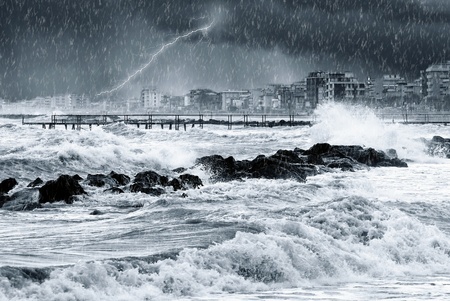This RecordClick genealogist is tired of winter. We haven’t had a lot of the white stuff in my neighborhood, but there is snow in the weather forecast– again. As I look out the window, I remember some of the storms of my youth and stories that my parents and grandparents related to me. These stories are important to the genealogical researcher who is tracing family history.
I’ve talked to lots of older relatives and friends about past weather events. There were plenty of stories, but, sometimes, while the storm was remembered, the date remained fuzzy and not certain. Of course, the story is important and, as a professional genealogist and family history researcher knows, a few key questions will help guide the story teller to the correct dates.
First, here is a brief history of the government entity which keeps the nation’s weather records. The National Weather Service was not always identified as the National Weather Service. The recording agency began with the Grant administration in 1870 when the Secretary of War was authorized to establish a national weather service called “The Division of Telegrams and Reports for the Benefit of Commerce”. It was placed in the War Department with the idea that the military precision could be applied to keeping weather statistics. In the frontier states, the duty of recording weather data often fell to the Army post surgeon.
A brief National Weather Service history timeline follows:
- 1870 – Division of Telegrams and Reports for the Benefit of Commerce was created under the War Department.
- 1890 – Division of Telegrams was transferred to the Department of Agriculture.
- 1891—The division became known as the Weather Bureau.
- 1940 – The agency was moved to the Department of Commerce.
- 1966 – Department of Environmental Science Services Administration created and became the home of the National Weather Service, formerly known as the Weather Bureau.
- 1970 – The Department of Environmental Science Services Administration was renamed National Oceanic and Atmospheric Administration.
Weather played an important role in the lives of our ancestors and our family history. Most years had major weather events such as a drought or heat wave in the summer, floods, hail or blizzard in the fall and winter, and storms at sea. There were earthquakes and volcanic eruptions. There were extreme weather conditions such as the Blizzard of 1888 and seismic events such as the San Francisco earthquake of 1906. Newspapers of the time period featured stories on these events. History books provide full detailed accounts.
Online resources for the family history researcher looking for weather information include:
- The National Weather Service
- The National Oceanic and Atmospheric Administration (NOAA)
- Weather Underground
In preparing for a family history interview, the genealogist must remember that, while it is important to prepare questions for the interview, these preparations may blow away like the snow outside the window, depending on the direction your conversation takes. To begin the family history interview, ask questions about the person’s life, including where they lived and what was going on in the world at the time. It is natural to add questions about the weather at this time during the family history interview.
It is helpful to trace family trees by asking relationship questions about grandparents, aunts, uncles and cousins. Ask if there were family reunions and, if so, what were they like? Ask activity questions such as: What was school like? What were the extra-curricular activities? Were there household chores? How was money earned? Was it easy to learn how to drive? What were the cars and roads like? What conveniences did the family have? And then you can ask about the weather: How did the weather impact these activities?
A genealogist can be most accurate by working with both stories and facts when putting together the family history. Notice that until now I haven’t mentioned a lot of dates–yet. If the interviewee voluntarily provides some dates, that is fine. But it is essential to verify family history dates to be sure they are correct, including when relatives were born, died, married, where they lived, attended school and church.
Weather may have impacted every aspect of a family history and may be used as a point of reference in the genealogical story. Do some extra work to find out about the weather.
Here is an example:
When I was in the fifth or sixth grade, it was a rainy spring (I think) and a creek in the area where I lived flooded. I can remember seeing a good sized open area that had been crop land turned into one gigantic lake. The flooding caused a good deal of inconvenience resulting in a number of governmental entities cooperating to creating several dams and lakes on the creek to solve the problem. So, what was the storm really like?
First, I looked at an online newspaper, the Omaha World Herald, for the city where I lived – Omaha, Nebraska. A general search using the name of the creek “Papio” and the term “flood” plus the years I was in the fifth to sixth grade, 1959 to 1961, brought up the issue with the story about the storm. There it was: August 2, 1959. The weather websites provided detailed atmospheric information. I found the almanac section of the Underground Weather website helpful because towns and dates are entered into a search engine to get the weather information. One note: A city or town used to have one official weather recording station and the amount of precipitation received may vary a great deal in a small area and yet affect a different area.
Listen to the stories and use a local newspaper and weather websites as historical guides. The expert RecordClick genealogists are available to assist you in your genealogy research and family history weather stories. We are able to provide research assistance, help you organize your family history, and help with documentation.

